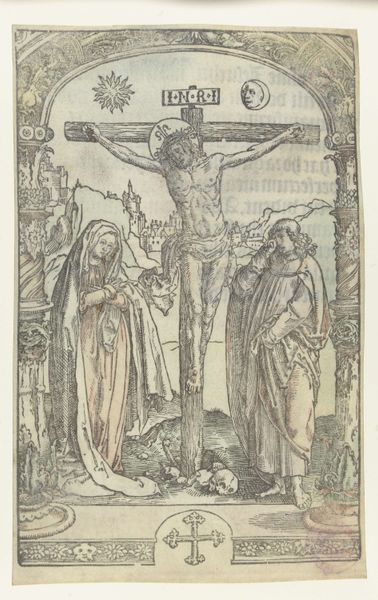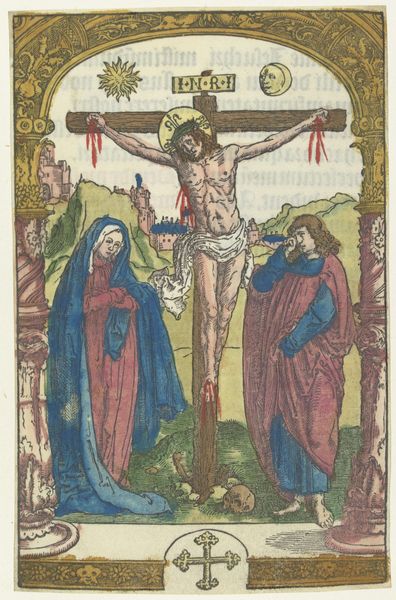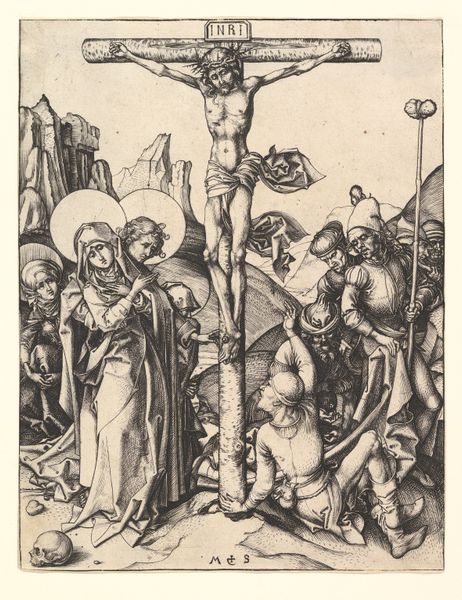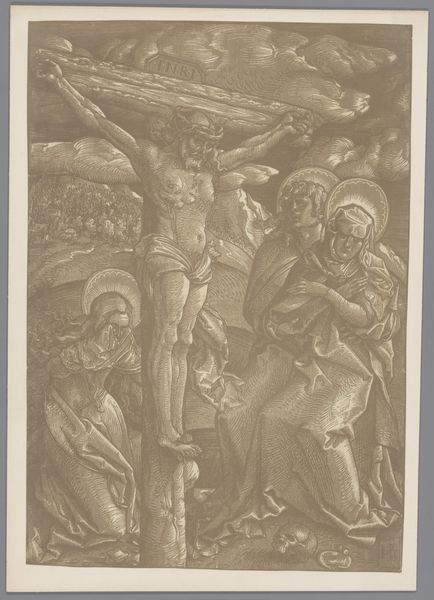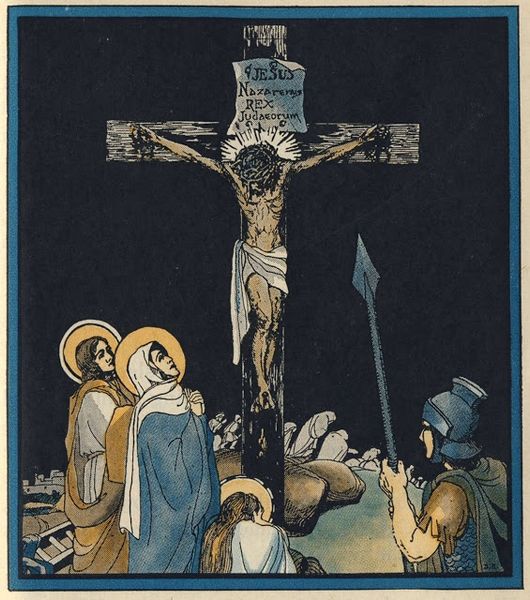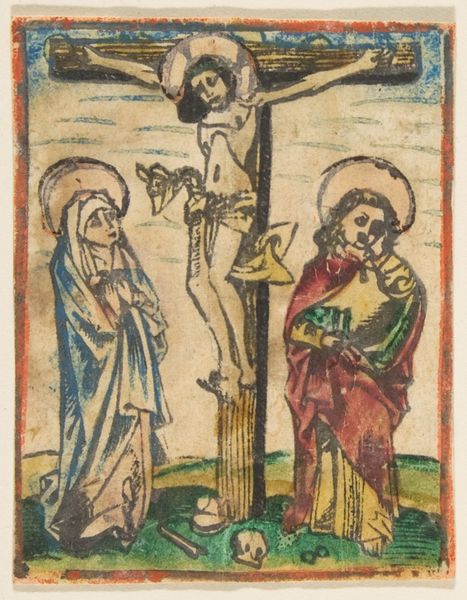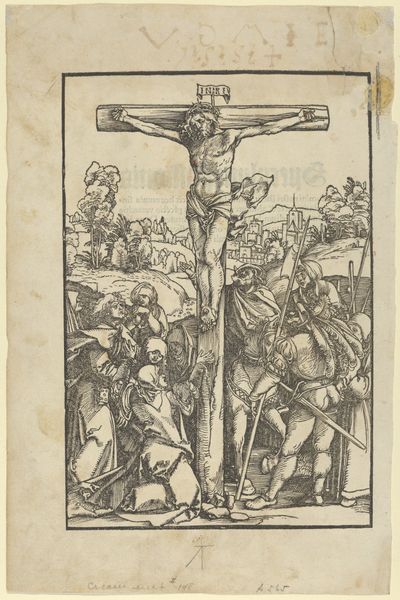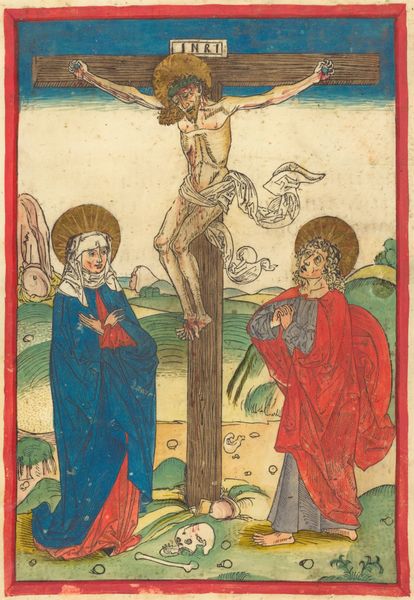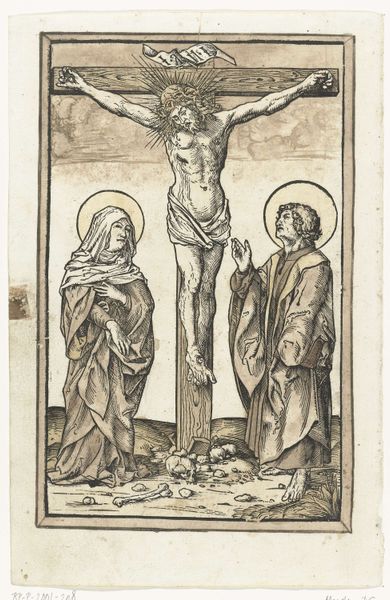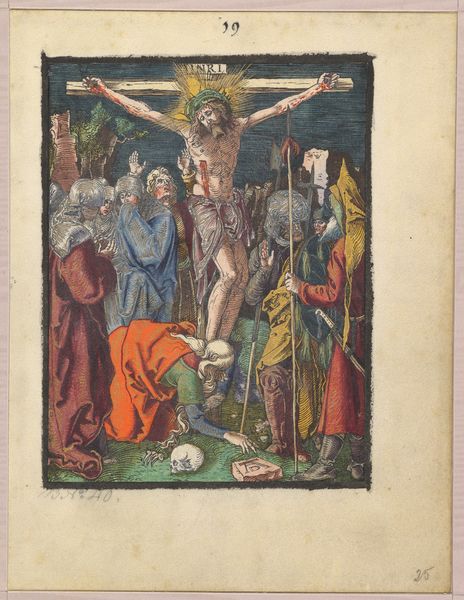
drawing, print, woodcut, engraving
#
drawing
# print
#
figuration
#
woodcut
#
crucifixion
#
history-painting
#
northern-renaissance
#
engraving
#
christ
Dimensions: Sheet: 11 3/16 × 7 9/16 in. (28.4 × 19.2 cm)
Copyright: Public Domain
Editor: So, this is Hans Schäufelein's "The Crucifixion," created around 1505. It's a woodcut, and even though it depicts such a tragic scene, the composition feels...balanced, almost peaceful in a way. What catches your eye when you look at it? Curator: It's precisely that balance that resonates. Consider the cultural memory embedded in the image of the cross. It represents not only immense suffering, but also redemption. Schäufelein has placed it centrally, allowing it to act as a fulcrum, dividing the figures of grief and those perhaps more ambivalent. Notice the gazes—where do they lead us, and what stories do they tell of faith, doubt, or even simple curiosity? Editor: The gazes definitely guide me. The people to the left look devastated, while the soldiers on the right seem detached, like this is just another job. Curator: Indeed. Those contrasts are vital. But let's consider what they signify. The mourners connect us to centuries of shared pain and loss. Do you see how their posture is almost an echo of the crucified Christ, a visual echo connecting human suffering to divine sacrifice? And conversely, what of the impassive figures—do they reflect a societal disconnect, perhaps foreshadowing periods of religious turmoil to come? Editor: I never considered it as foreshadowing! Now I am thinking about how different groups throughout history have interpreted the same symbols differently. Curator: Exactly! It's through the continuous re-evaluation of these enduring images that cultural identity itself is shaped and reshaped. And that makes this woodcut not just a piece of history, but a vibrant, ongoing dialogue. Editor: I guess I hadn’t realized how much one image could say about not just a single event, but how people interpret and remember it centuries later. That's really powerful.
Comments
No comments
Be the first to comment and join the conversation on the ultimate creative platform.
